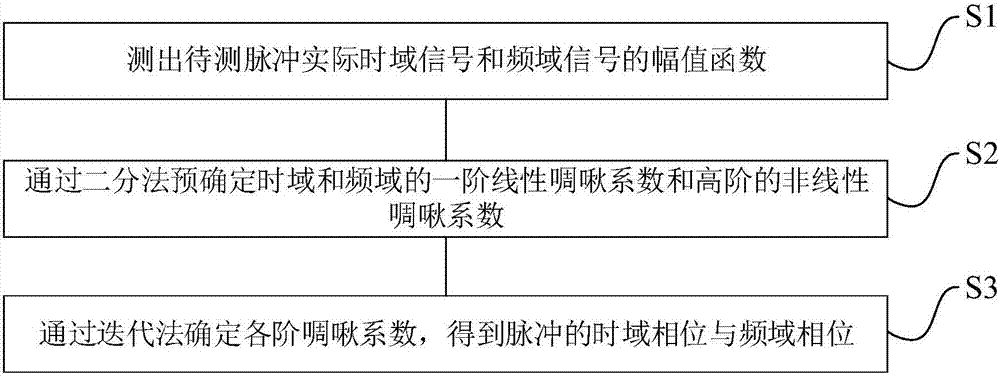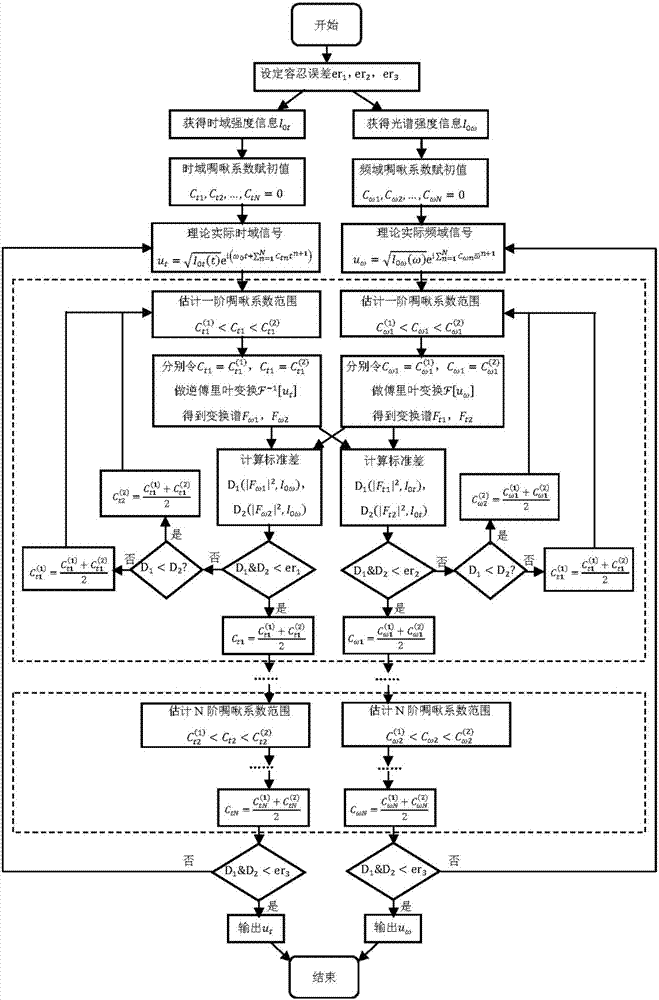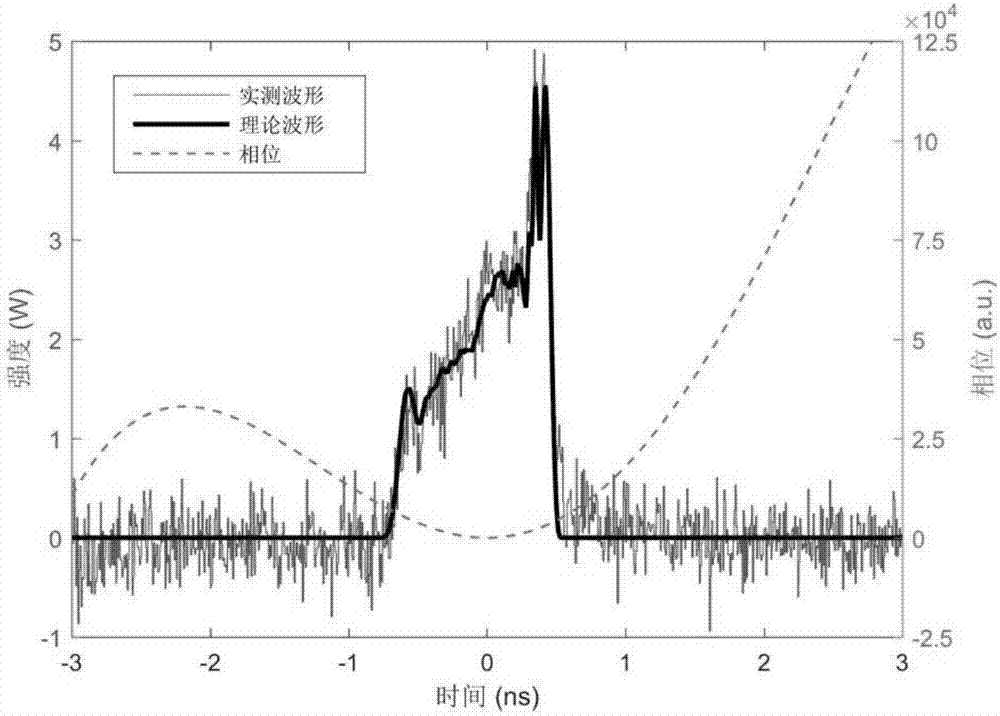Ultra-short chirped pulse time domain phase and frequency domain phase measurement method and system
A technology of ultra-short chirp and phase measurement, which is applied in measurement devices, measurement optics, optical radiation measurement, etc., can solve problems such as insufficient measurement capability, low work efficiency, and complicated measurement methods, and achieve the goal of improving work efficiency and measurement capability Effect
- Summary
- Abstract
- Description
- Claims
- Application Information
AI Technical Summary
Problems solved by technology
Method used
Image
Examples
Embodiment 1
[0046] Such as figure 1 As shown in the figure, a method for measuring ultrashort chirped pulse time-domain phase and frequency-domain phase is shown in the figure, including:
[0047] S1. Measure the amplitude function of the actual time-domain signal and frequency-domain signal of the pulse to be measured;
[0048] S2. Predetermining first-order linear chirp coefficients and high-order nonlinear chirp coefficients in the time domain and frequency domain by dichotomy;
[0049] S3. Determine the chirp coefficients of each order by an iterative method to obtain the time-domain phase and frequency-domain phase of the pulse.
[0050] As preferably, said step S2 specifically includes:
[0051] S21. Predetermining the first-order linear chirp coefficients in the time domain and frequency domain;
[0052] S22. Predetermining N-order nonlinear chirp coefficients in time domain and frequency domain;
[0053]S23. Keep the N-order nonlinear chirp coefficients unchanged, and repeated...
Embodiment 2
[0078] This embodiment provides an ultrashort-chirped time-domain pulse phase and frequency-domain phase measurement system, using the method described in Embodiment 1, including:
[0079] The actual amplitude function acquisition module is used to obtain the amplitude function of the actual time domain signal and frequency domain signal;
[0080] The chirp coefficient determination module is used to determine linear chirp coefficients and high-order nonlinear chirp coefficients in the time domain and frequency domain through a dichotomy method and an iterative method.
Embodiment 3
[0082] In this embodiment, what is to be tested is a quasi-monochromatic chirped pulse of hundreds of picoseconds, such as figure 2 As mentioned, the specific implementation steps are as follows:
[0083] Firstly, the time-domain intensity information and spectral intensity information of the pulse are measured with an oscilloscope and a spectrometer respectively, and the measured signal is normalized to obtain the amplitude function of the actual time-domain signal and spectral signal.
[0084] Assume that the measured time-domain intensity waveform and frequency-domain spectral intensity are normalized and denoted as I 0t , I 0ω ,Such as image 3 and Figure 4 shown in ; assuming that the chirp coefficients C of each order in the time domain t1 , C t2 , C t3 ...; the chirp coefficient C of each order of the spectrum ω1 , C ω2 , C ω3 …; Let the center frequency be ω 0 ;remember Then the actual time domain signal and frequency domain signal should be:
[0085] ...
PUM
 Login to View More
Login to View More Abstract
Description
Claims
Application Information
 Login to View More
Login to View More - R&D
- Intellectual Property
- Life Sciences
- Materials
- Tech Scout
- Unparalleled Data Quality
- Higher Quality Content
- 60% Fewer Hallucinations
Browse by: Latest US Patents, China's latest patents, Technical Efficacy Thesaurus, Application Domain, Technology Topic, Popular Technical Reports.
© 2025 PatSnap. All rights reserved.Legal|Privacy policy|Modern Slavery Act Transparency Statement|Sitemap|About US| Contact US: help@patsnap.com



